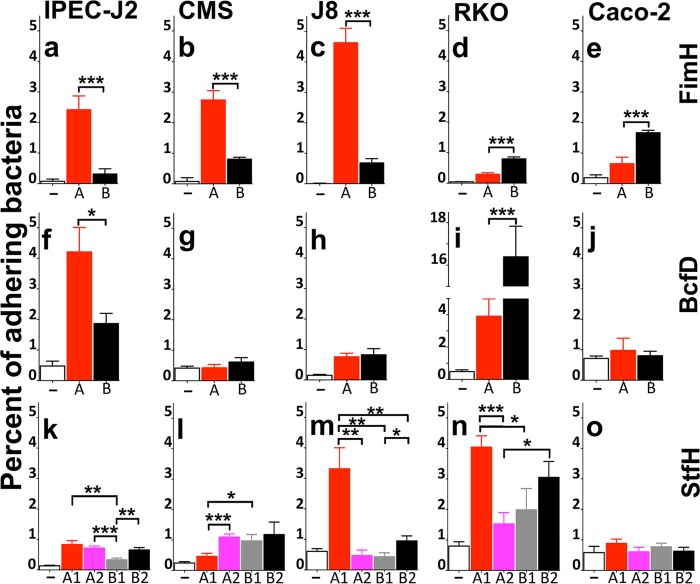FIG 5.
Bacterial adhesion to host-specific intestinal epithelial cells. The binding of recombinant E. coli AAEC189 expressing S. Newport Fim, Bcf, or Stf fimbriae with their different adhesin alleles, respectively, FimH (a to e), BcfD (f to j), or StfH (k to o), was determined with porcine (IPEC-J2), bovine (CMS and J8), and human (RKO and Caco-2) intestinal epithelial cell lines. The histograms indicate the percentages of adherent bacteria (CFU of the cell-associated bacteria divided by CFU of the inoculum). Results are the means of the results of three independent assays done in triplicate, with error bars representing standard errors. Asterisks above each bar represent significant differences (unpaired t tests) between percentages of bound bacteria with allele A or A1 (red bars), allele A2 (pink bars), allele B or B2 (black bars) or allele B1 (gray bars) for the respective adhesins, as shown on the right side (*, P < 0.05; **, P < 0.01; ***, P < 0.001). Nonfimbriated E. coli AAEC189 pAZ37 (Fim), pBAD33 (Stf), or pHSG-576 (Bcf) was used as a background binding control (open bars) to determine statistically significant adhesion, as mentioned in Results. The FimH data are from Yue et al. (19).

